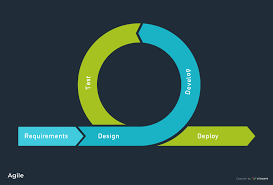Comparing SDLC and Agile Methodologies: A Comprehensive Analysis
Understanding SDLC and Agile: A Comprehensive Comparison
Software Development Life Cycle (SDLC) and Agile are two popular methodologies used in software development. While both aim to streamline the development process, they have distinct approaches and principles. Let’s explore the key differences between SDLC and Agile.
Software Development Life Cycle (SDLC)
SDLC is a structured approach to software development that consists of several phases, including planning, design, implementation, testing, deployment, and maintenance. It follows a sequential order where each phase must be completed before moving on to the next.
Key characteristics of SDLC include:
- Emphasis on thorough planning and documentation
- Rigorous testing at each stage
- Predictable timelines and deliverables
- Well-defined roles and responsibilities
- Changes are difficult to implement once the process has started
Agile Methodology
Agile is an iterative approach that focuses on delivering working software in short cycles known as sprints. It values flexibility, collaboration, and adaptability to change throughout the development process.
Key characteristics of Agile include:
- Iterative development with frequent releases
- Cross-functional teams working collaboratively
- Customer feedback drives continuous improvement
- Emphasis on responding to change over following a plan
- Allows for changes and updates at any stage of development
Comparison Between SDLC and Agile
| SDLC | Agile | |
|---|---|---|
| Approach | Sequential, linear process | Iterative, flexible approach |
In Conclusion,
6 Essential Tips for Navigating SDLC and Agile Methodologies
- Plan each phase of the software development life cycle carefully to ensure efficiency and effectiveness.
- Involve stakeholders at every stage to gather feedback and ensure alignment with business goals.
- Perform thorough testing during each phase to identify and fix issues early in the process.
- Break down projects into smaller iterations or sprints for better manageability and adaptability.
- Encourage close collaboration between cross-functional teams to promote transparency and quick decision-making.
- Embrace change as a competitive advantage by being flexible and responsive to evolving requirements.
Plan each phase of the software development life cycle carefully to ensure efficiency and effectiveness.
To maximize efficiency and effectiveness in software development, it is crucial to meticulously plan each phase of the Software Development Life Cycle (SDLC). By carefully outlining the objectives, tasks, and resources required for each stage, teams can ensure a smooth progression from planning to deployment. This proactive approach not only helps in identifying potential challenges early on but also allows for better coordination among team members and stakeholders. Planning each phase thoughtfully in advance sets a solid foundation for successful project execution and delivery.
Involve stakeholders at every stage to gather feedback and ensure alignment with business goals.
To ensure the success of software development projects following SDLC or Agile methodologies, it is crucial to involve stakeholders at every stage. By actively engaging stakeholders throughout the process, teams can gather valuable feedback, address concerns promptly, and ensure alignment with business goals. This collaborative approach not only enhances communication and transparency but also leads to the development of solutions that meet the needs and expectations of all parties involved.
Perform thorough testing during each phase to identify and fix issues early in the process.
Performing thorough testing during each phase of the software development process, whether following the SDLC or Agile methodology, is crucial for identifying and addressing issues early on. By conducting comprehensive testing at every stage, developers can detect potential problems and bugs sooner, allowing for timely resolution and ensuring a smoother development cycle. This proactive approach not only helps in maintaining the quality of the software but also minimizes the risk of costly rework or delays later in the project timeline.
Break down projects into smaller iterations or sprints for better manageability and adaptability.
Breaking down projects into smaller iterations or sprints is a valuable tip in both SDLC and Agile methodologies. By dividing the project into manageable chunks, teams can focus on specific tasks within a set timeframe, leading to better manageability and adaptability. This approach allows for continuous feedback, adjustments, and improvements throughout the development process, ultimately enhancing productivity and ensuring that the final product meets the desired requirements effectively.
Encourage close collaboration between cross-functional teams to promote transparency and quick decision-making.
Encouraging close collaboration between cross-functional teams is a crucial tip in both SDLC and Agile methodologies. By fostering a culture of transparency and communication among team members with diverse skills and expertise, organizations can enhance decision-making processes and accelerate project timelines. This collaborative approach allows for the seamless exchange of ideas, feedback, and knowledge, ultimately leading to more efficient problem-solving and the successful delivery of high-quality software solutions.
Embrace change as a competitive advantage by being flexible and responsive to evolving requirements.
Embracing change as a competitive advantage in software development involves maintaining flexibility and responsiveness to evolving requirements. By being open to adapting to new challenges and opportunities, teams can stay ahead of the curve and deliver innovative solutions that meet the dynamic needs of users. This proactive approach not only enhances the quality of the final product but also fosters a culture of continuous improvement and agility within the development process.



